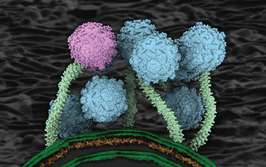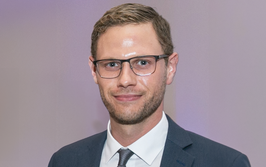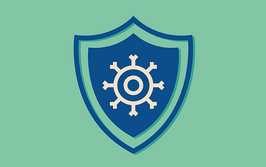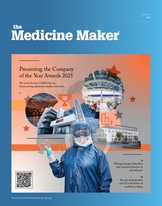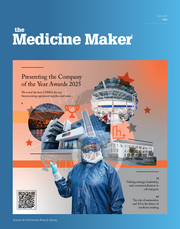Antibiotic Apocalypse: Resistance is (Not) Futile
Threatening global economies, healthcare systems and human lives, the issue of antibiotic resistance is ever-present. But how much closer are we to resolving the problem?
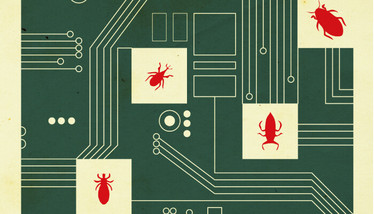
Antimicrobial resistance (AMR) affects societies across the world. Each year, an estimated 700,000 people die worldwide as a result of drug resistant bacterial infections (1). The repercussions for public health are clear – but there are also economic implications; estimates suggest that 3.8 percent of the world’s annual GDP could be lost by 2050 in a high-AMR scenario (where a significant number of antibiotics fail to treat bacterial infections) with an annual loss of $3.4 trillion by 2030 (2).
The solution to this far-reaching issue? Well, it is far from straightforward. There may well be a pressing need to regenerate a sustainable pipeline of new drugs to combat AMR, but Andrew Edwards, a senior lecturer at Imperial College London, argues that current market conditions aren’t suited to the development of antibiotics.
Make antibiotics great again
Roughly half of all antibiotics used today were discovered between the 1950s and 1970s (3). Today, developing new drugs has become more complex, time consuming, and expensive.. Antibiotics typically have short treatment durations and the use of a new antibiotic would ideally be limited to patients who really need it, to help limit development of resistance. As Edwards explains, “The existing market is geared toward making medicines that can be used by as many patients as possible. By contrast, new antibiotics may be locked away and held in reserve only for infections caused by the most antibiotic resistant bacteria. Therefore, there are poor financial returns for companies considering pursuing them.”
Another significant challenge is that many of the drugs entering the market are variations of existing products. Though they are relatively easy to produce, they are often susceptible to the same resistance mechanisms that were neutralized in previous iterations of these drugs. One essential component of the solution to the ongoing crisis, according to Edwards: “Investment in entirely different classes of antibiotics as well as more rapid diagnostics and vaccines.”
Edwards also highlights a less obvious problem that prevents headway being made in the field: “Whilst high prices and host toxicity are seen as acceptable for cancer treatments, antibiotics are expected to be cheap and non-toxic. And that means the development of antibiotics is expensive, risky, and poorly rewarded.”
The current climate drives the need for alternatives to traditional business models; for example, incentivizing the development of novel products through approaches such as upfront funding, market entry rewards and transferrable exclusivity vouchers. With the latter example, an extension is granted to successful innovators of a new antibiotic that could be applied to an existing drug on a one-time basis. The extension would be tradeable, so an innovator could sell it to a company with a patent close to expiry.
Manica Balasegaram, Executive Director at The Global Antibiotic Research and Development Partnership (GARDP), a not-for-profit organization set up by the WHO and Drugs for Neglected Diseases initiative (DNDi), explains that finding the right balance of these incentives is key to addressing the issue. However, he also adds that transferable exclusivity vouchers are perceived as “too costly or politically non-viable for governments.” He believes that the public sector would need to play a role in making such initiatives successful.
In an attempt to determine if one of these alternative solutions had real potential, the UK became the first country in the world to start a trial of a new way of paying for antibiotics as part of its National Action Plan. The trial aims to test a reimbursement approach that offers a defined revenue stream and secure access for existing and new antibiotics through the country’s National Health Service. “The pilot project is definitely promising. But critical questions remain, including appropriate subscription rates, sustainable financing, qualifying criteria, and scalability,” says Balasegaram. “Such incentives could be an economically and politically feasible way to help maintain an R&D ecosystem, particularly for SMEs and manufacturers.”
According to the Association of the British Pharmaceutical Industry (ABPI), a leader in delivering the UK’s action plan, the practical details of the model (including ensuring appropriate use) will be ironed out as the project progresses.
Though efforts are being made to transform the public sector’s approach to antibiotic R&D, the private sector also needs to be rallied. And so, the AMR Review, chaired by Lord Jim O’Neill, stated that incentive models must be sufficient to sustain R&D across the full lifecycle of products to see long-term change to the pipeline of products available (4). However, a recent review of the progress made since the recommendation was implemented highlighted that there had been little movement by governments or the pharmaceutical industry (4). Lord O’Neill noted in an AMR Review report that both parties are seemingly waiting for the crisis to escalate before doing more. The lack of action not only affects the readiness of tools required to address rising resistance, but also has implications on the profitability of industry, given that drug resistance threatens the viability of current product markets. The review called for greater efforts on all sides: “Unless key players are prepared to behave differently and make bolder decisions, the challenge is never going to be solved, whether that be policymakers, drug companies, doctors, farmers and, ultimately, all eight billion of us (4).”
Bryan Deane, New Medicines and Data Policy Director at the ABPI, notes that since the formation of the AMR Industry Alliance (a private sector coalition set up to provide sustainable solutions to the AMR crisis) in 2016, despite more large companies withdrawing and two biotech bankruptcies, industry has managed to sustain the involvement of over 50 companies (5) but agrees that more investment and better incentivization is needed. “Although the UK is very good at infection prevention and control, it can take over ten years to develop a new medicine - the whole point of getting things right now, in terms of finding new antibiotics, is to be ready to prevent the disaster scenario from occurring.”
Deane and Balasegaram agree that, if mechanisms are developed to shift accountability to governments working directly with industry, the chance of implementation and desperately needed investment will increase. The Global Antibiotic Research & Development Partnership (GARDP), whose aim is to deliver five new treatments by 2025, was set up to help foster partnerships between the public and private sectors and is one of many organizations working to tackle AMR on an international scale. Other initiatives include the Davos Declaration; signed by over 100 companies and associations, the declaration represents an industry-wide commitment to deliver sustainable solutions to AMR on an international scale (6). But, despite marking a significant turning point in the industry’s battle against AMR, the market for antibiotics has continued to deteriorate.
Beyond borders
In low- and middle-income countries (LMICs) the consequences of AMR are more severe but less well understood, because data on drug resistance is lacking. “Proxy indicators point to a more dire situation than that faced in Europe and North America. It is in these LMICs where several issues – the lack of access to both new and old antibiotics, regulatory challenges, as well as lack of infection prevention and control – will hit hardest and show the first and most devastating impact of drug resistance,” explains Balasegaram.
For LMICs, other major challenges to handling the crisis are cost and education. Second- and third- line antibiotics are simply too expensive for developing countries to justify – a problem that is exacerbated by the overzealous sale and use of over-the-counter antimicrobials. Though awareness is increasing, thanks to initiatives like World Antibiotic Awareness Week (which was first launched in 2015), more needs to be done to improve the public’s understanding of AMR (7).
While the AMR Alliance report (5) documents further progress on access, this must go hand-in-hand with education to ensure appropriate use.
“No single country or organization is going to solve this problem on its own. We all have to recognize that, by working together, we are more than a sum of our parts,” says Deane. “Ensuring the appropriate use of antibiotics and implementation of action plans is essential to preventing the situation from worsening while we investigate new antibiotics and even new approaches.”
For Edwards, an important aspect to tackling AMR is collaboration between industry and academia. Bridging the gap between these two circles has conventionally been challenging, but UK Research and Innovation (UKRI), a non-governmental organization that directs research and innovation funding, is facilitating closer cooperation and collaboration via dedicated funding streams.
“Academia is investigating a huge number of novel therapeutic and diagnostic approaches that could prove to be key in battling antibiotic resistance. However, it’s very hard for academics and universities to efficiently translate this research into medicines and diagnostic tools.” explains Edwards. “This is largely because translational work requires expensive and technically demanding PK/PD and toxicology work, which is hard to find funding for. But industry excels in these areas; this makes it essential that academics and industry work together to identify and develop the solutions needed to tackle antibiotic resistance.”
The (not so) bleak future
Though there are still hurdles to overcome in the fight against AMR, many experts remain optimistic about the future. Deane comments that, though the UK has robust initiatives in place to help address AMR, scientists from around the globe will be the ones to solve the problem.
Balasegaram shares the same opinion: “I believe that collectively we can deliver new and improved treatments that will save lives. The know-how and resources exist. What is needed is the political will and urgency, at national and international levels, to bring these two elements together to deliver results.”
How long before we see those results? Well, that’s a question few would attempt to answer. What we do know is that bacteria are constantly evolving – and they don’t stop at borders. But as the number of projects in the pipeline continues to grow, so too do our chances of facing off the crisis.
- GARDP, “GARDP announces 5 BY 25 goal in response to the growing burden of antibiotic resistant infections.” Available at: http://bit.ly/2R83nFI
- World Bank Group, “Drug Resistant Infections: A Threat to Our Economic Future.” 2017. Available at: http://bit.ly/2vb7LfK
- SJ Hulgren et al., “Narrowing the spectrum: the new frontier of precision antimicrobials.” Genome Medicine. 9, 110 (2017)
- AMR Review, “Final Report and Recommendations,” Available at: http://bit.ly/2TiuPTT
- AMR Industry Alliance, “AMR life sciences industry 2020 report: Successes and setbacks in fighting superbugs”. 2020. Available at: bit.ly/3aSu4rc
- International Federation of Pharmaceutical Manufacturers & Associations, “AMR Industry Alliance.” Available at http://bit.ly/2NjxwAK
- OECD, “Averting the AMR Crisis”. Available at http://bit.ly/35TTOzK
After finishing my degree, I envisioned a career in science communications. However, life took an unexpected turn and I ended up teaching abroad. Though the experience was amazing and I learned a great deal from it, I jumped at the opportunity to work for Texere. I'm excited to see where this new journey takes me!

